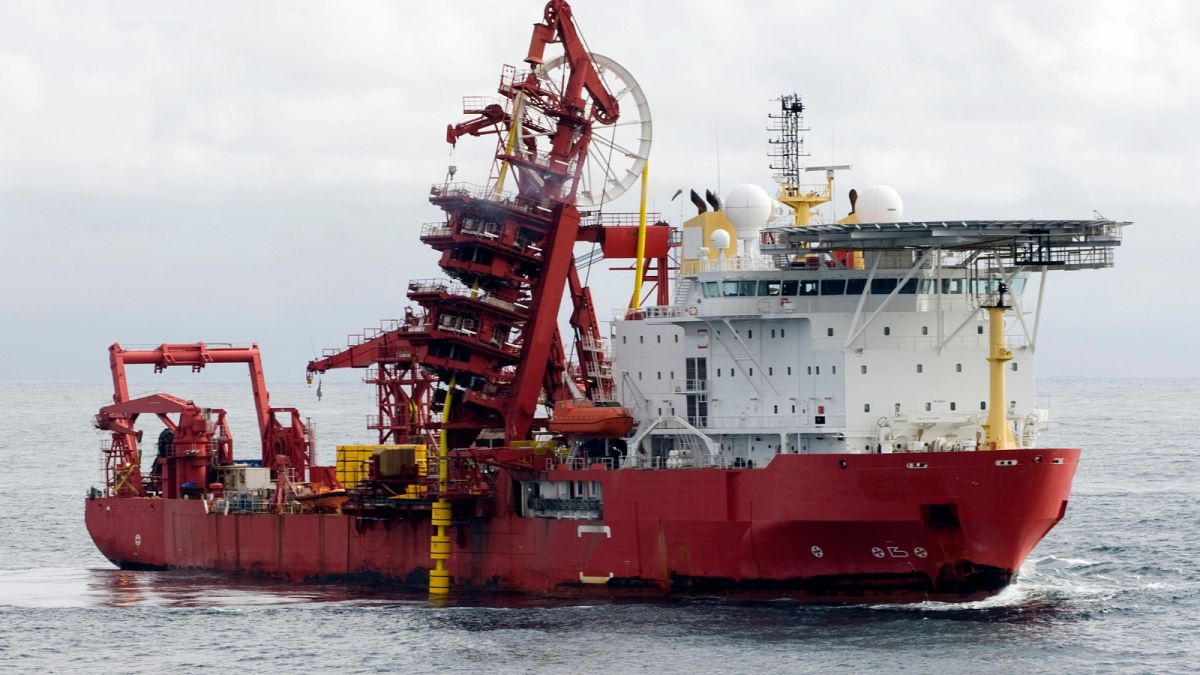In the second part of a series on subsea cables, we look at how Baltic Sea states are dealing with increased threats of Russian interference in their backyard.
Concerns have been rising about Russia and its capabilities to conduct a widespread attack on subsea cables.
A joint investigation from public broadcasters in Sweden, Denmark, Norway, and Finland found at least 50 suspected Russian spy ships operating in that region, where they are doing underwater research for potential sabotage sites.
In the background, NATO is quietly hosting meetings with these four states and others around the Baltic Sea to protect their subsea cables from attack.
Subsea cables are thick fibre-optic cables running along the bottom of the ocean that account for 95 per cent of the world’s Internet connections, according to the US National Oceanic and Atmospheric Administration (NOAA).
“The increasing dependency of our societies on undersea infrastructure means we need to do more to enhance their security,” said Jens Stoltenberg, then NATO secretary general, following a meeting on undersea cable security in May.
What’s the Russian incentive in the Baltic Sea?
Nine countries border the Baltic Sea: Denmark, Sweden, Finland, Estonia, Latvia, Lithuania, Germany, Russia, and Poland.
There are at least 10 undersea cables that connect these countries to the rest of Europe, according to Olevs Nikers, President of the Baltic Security Foundation.
Henri van Soest, senior analyst at RAND Europe, said the Baltic Sea is the easiest place for Russia to attack because it’s directly accessible to them through ports in St Petersburg and the Kaliningrad enclave east of Poland.
The Russians also influence some neighbouring countries with energy exports, van Soest continued.
The Baltic states of Estonia, Latvia, and Lithuania will remain part of the so-called BRELL electricity ring with Russia and Belarus for a few more months ahead of their disconnection in February 2025.
Russia moved all three countries to their national grid as part of their annexation into the Soviet Union during the Second World War, and the current BRELL agreement keeping them in an electric power system with Russia and Belarus dates back to 2001.
Undersea electricity and gas cables are set to help make up the difference.
“This new infrastructure, much of it undersea, is generally positive for European security because it weakens Russia’s ‘energy weapon,'” a review paper written by a NATO research fellow about the additional cables.
“Nevertheless, having its [Russia’s] influence stymied by the continued erosion of its energy monopoly, Moscow might now retaliate with sabotage”.
Lithuania reported “several instances of interference” from Russian missiles while the NordBalt undersea cable that connects the country to Sweden was laid in 2015, the review paper continued.
The region has also seen other incidents, including the suspected sabotage of the Balticconnector pipeline and a subsea cable connecting Finland and Estonia. In 2023, the Finnish government said the damage was likely done as a deliberate act, according to a Reuters report.
The Chinese admitted 10 months later that a vessel registered in Hong Kong named Newnew Polar Bear was responsible for the damage, but maintained it was an accident caused by a storm, according to theSouth China Morning Post.
Finland and Estonia are conducting separate investigations to determine whether it was a deliberate attack or an accident.
‘Additional surveillance’ from NATO
The Baltic Sea is interesting for Russia as a background to take on NATO, Nikers said.
All Baltic Sea countries besides Russia are now NATO members because of Sweden and Finland’s recent membership, creating a new name of “NATO Lake” for the Baltic Sea.
Sweden and Finland revved up spending by doubling their 2020 military budgets and exceeding NATO’s 2 per cent goal with their respective budgets of 120 billion Swedish crowns (€10.74 billion) and €6.7 billion.
What that means is NATO will be able to use both their own forces and the expanded Swedish and Finnish militaries when protecting the Baltic Sea, van Soest said.
In the wake of the Balticconnector incident, NATO set up “additional surveillance and reconnaissance flights,” over the sea to watch for another potential incident.
“NATO will continue to adapt its maritime posture in the Baltic Sea and will take all necessary steps to keep allies safe,” acting NATO spokesperson Dylan White said.
In the last year, NATO launched two divisions to coordinate responses to threats against subsea cables in Brussels and London.
How to consolidate resources
After the Balticconnector incident, officials from the Baltic Sea states had different ideas on how to protect undersea cables.
Edgars Rinkevics, Latvia’s president, proposed closing the Baltic Sea for shipping if Russia was found responsible for damaging the cable.
The Russians later said in media reports that any threats against Russia to close the Baltic Sea were unacceptable.
Some states are only able to close parts of the sea during wartime, otherwise they risk violating international rights to passage, according to Estonian public media.
Still, Nikers said the region needs a coordinated strategy so all levels of government know how they’ll be working with NATO if an attack does take place.
“The next question is how are we going to consolidate resources,” he said.
“If there was anything that happened in the Baltic Sea now, I doubt the response would be proactive and effective… because those plans are kind of reactive at this moment”.
NATO said in a statement in May that it had discussed information-sharing and ways to deter and defend against undersea infrastructure threats with an underwater critical infrastructure working group.
Euronews Next reached out to the national governments of all the Baltic States to get any updates on what regional strategies they’d like to put in place but did not receive an immediate reply.
This is the second article in a two-part series focusing on the vulnerabilities of Europe’s submarine cables and the impact of a potential attack. You can read part one here.

